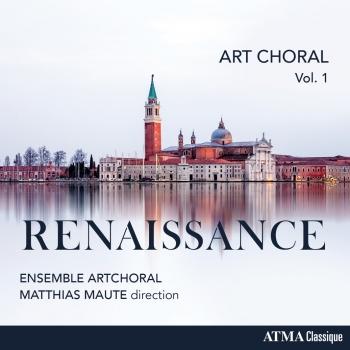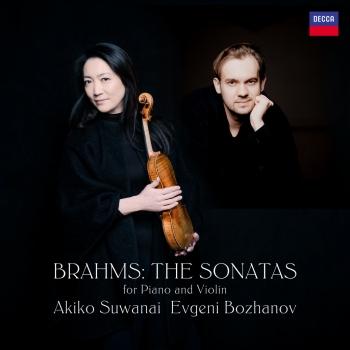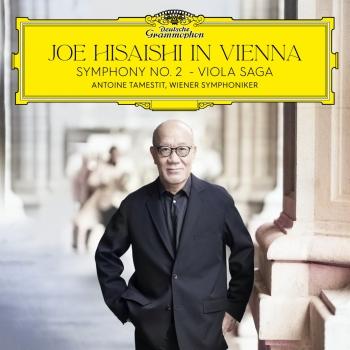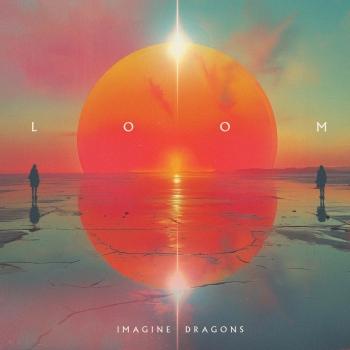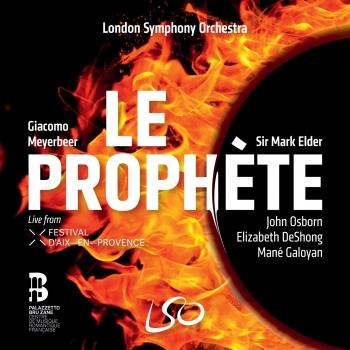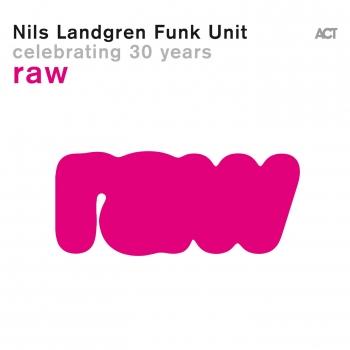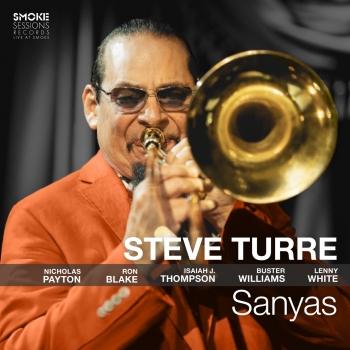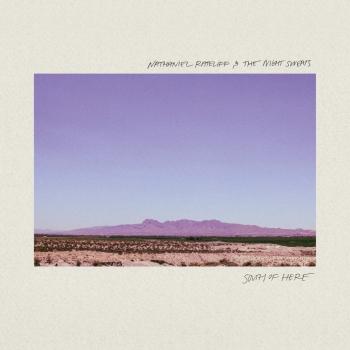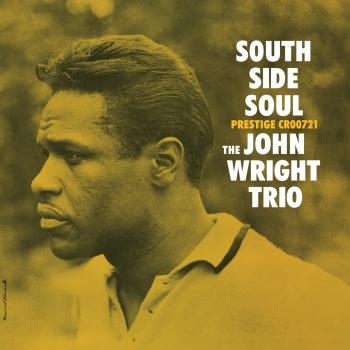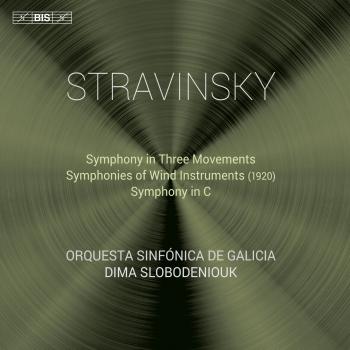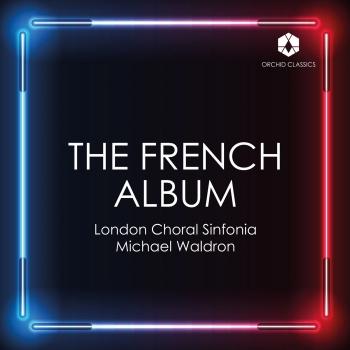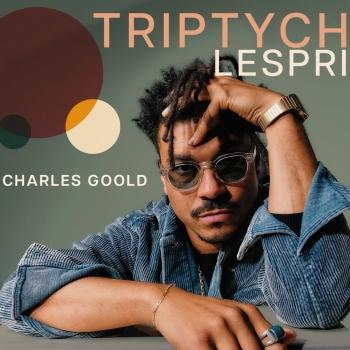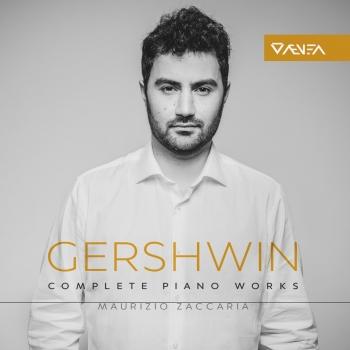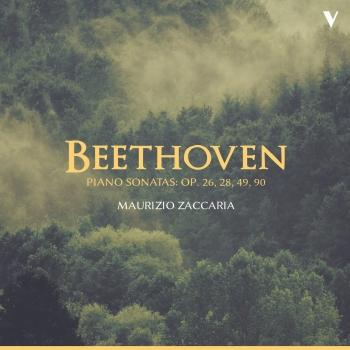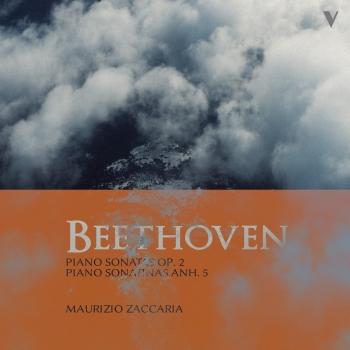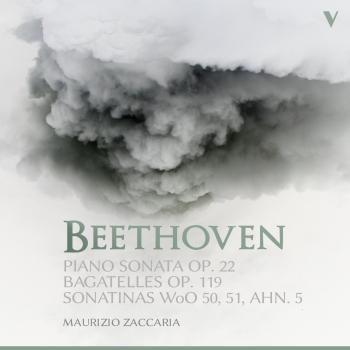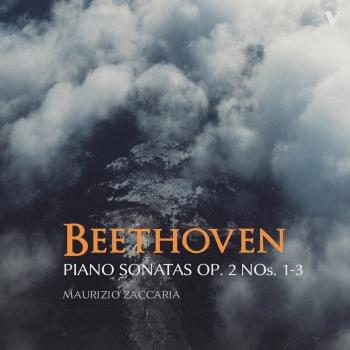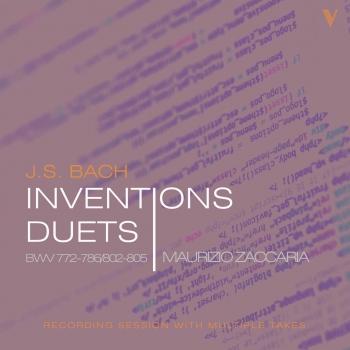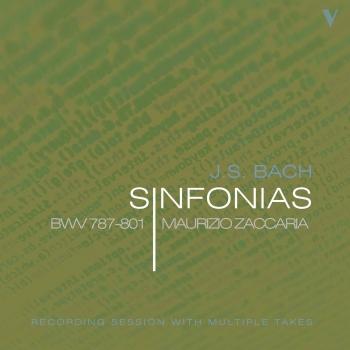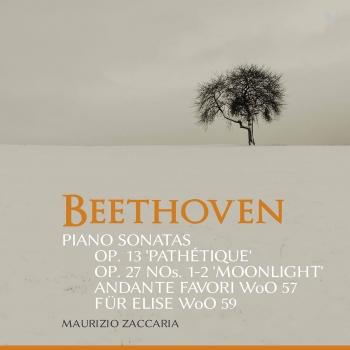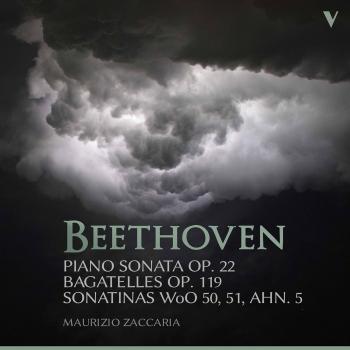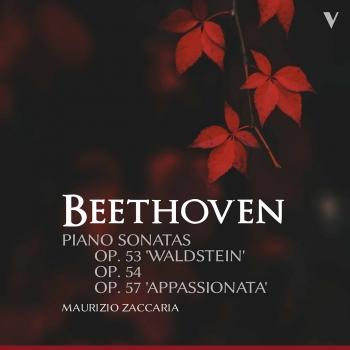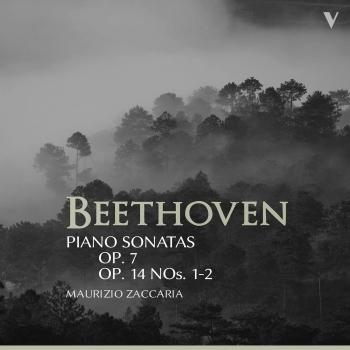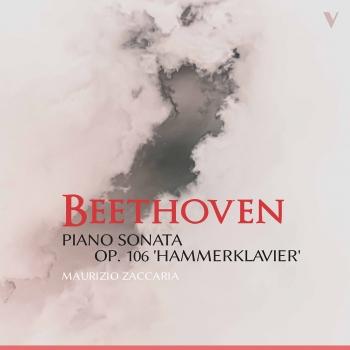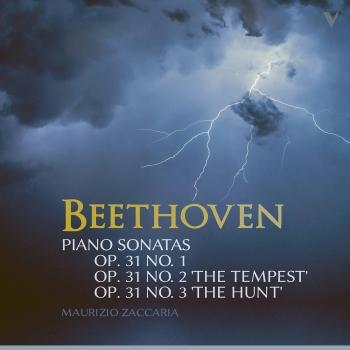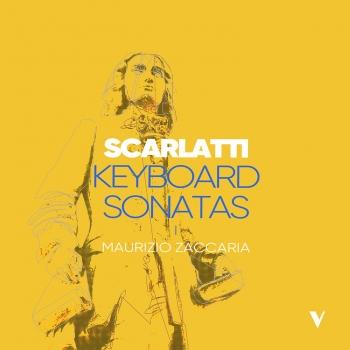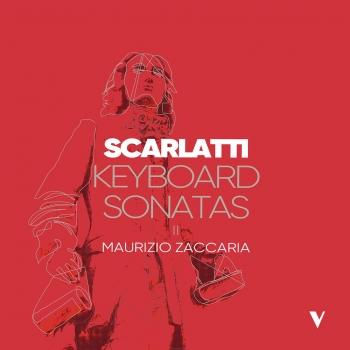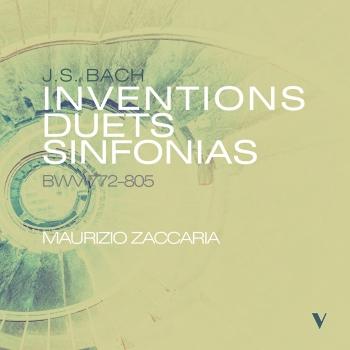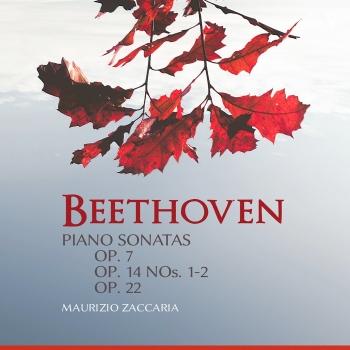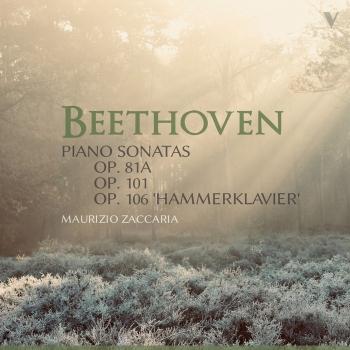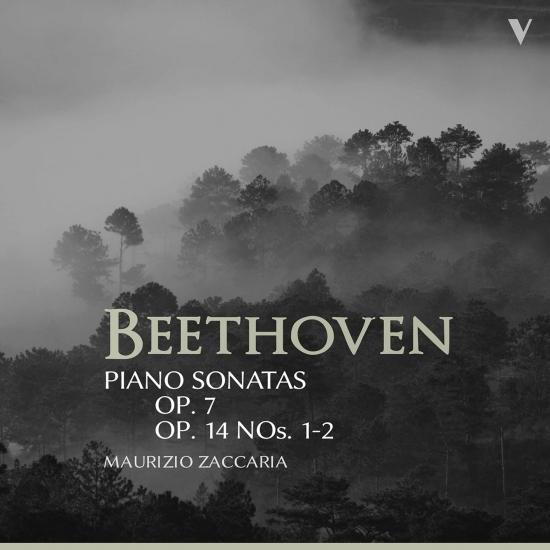
Beethoven: Piano Sonatas Nos. 4, 9 & 10 Maurizio Zaccaria
Album info
Album-Release:
2021
HRA-Release:
08.01.2021
Label: OnClassical
Genre: Classical
Subgenre: Instrumental
Artist: Maurizio Zaccaria
Composer: Ludwig van Beethoven (1770–1827)
Album including Album cover
- Ludwig van Beethoven (1770 - 1827): Piano Sonata No. 4 in E-Flat Major, Op. 7 "Grand":
- 1Beethoven: Piano Sonata No. 4 in E-Flat Major, Op. 7 "Grand": I. Allegro molto e con brio06:15
- 2Beethoven: Piano Sonata No. 4 in E-Flat Major, Op. 7 "Grand": II. Largo con gran espressione08:42
- 3Beethoven: Piano Sonata No. 4 in E-Flat Major, Op. 7 "Grand": III. Allegro05:07
- 4Beethoven: Piano Sonata No. 4 in E-Flat Major, Op. 7 "Grand": IV. Rondo. Poco allegretto e grazioso06:33
- Piano Sonata No. 9 in E Major, Op. 14 No. 1:
- 5Beethoven: Piano Sonata No. 9 in E Major, Op. 14 No. 1: I. Allegro05:49
- 6Beethoven: Piano Sonata No. 9 in E Major, Op. 14 No. 1: II. Allegretto02:54
- 7Beethoven: Piano Sonata No. 9 in E Major, Op. 14 No. 1: III. Rondo. Allegro comodo03:24
- Piano Sonata No. 10 in G Major, Op. 14 No. 2:
- 8Beethoven: Piano Sonata No. 10 in G Major, Op. 14 No. 2: I. Allegro06:18
- 9Beethoven: Piano Sonata No. 10 in G Major, Op. 14 No. 2: II. Andante03:44
- 10Beethoven: Piano Sonata No. 10 in G Major, Op. 14 No. 2: III. Scherzo. Allegro assai03:16
Info for Beethoven: Piano Sonatas Nos. 4, 9 & 10
With the Sonata in E-flat Major, Op. 7, published by Artaria “for harpsichord and piano” in 1797, Beethoven expands the scope of keyboard technique and structural proportions. Indeed, some of the passagework in the outer movements must have been prohibitive to most amateur pianists; and the length of the sonata, at the time, made it the longest work for piano ever published, and the second longest sonata Beethoven composed (the record goes to the Sonata in B-flat Major, Op. 106 “Hammerklavier”). Metric displacements and violent dynamic contrasts inform the opening movement, while the prayer-like Adagio is possibly one of the most extraordinary achievements of Beethoven’s youth. The Allegro that follows, light and playful, is interrupted by a stormy “minore” section that was most likely the inspiration for the first of Schubert’s Klavierstucke, D 946. The melodious but challenging Rondo closes the sonata, unexpectedly, in a murmur.
The two Sonatas, Op. 14 were published by Artaria as a set in 1799, and show a Beethoven less concerned with structural expansion and technical display. However, the iconoclastic spirit that informed earlier explorations in the genre is preserved, in particular in the way harmony and dialectics between thematic materials are developed. The first of the two works, in the key of E Major, was transcribed as a string quartet in the key of F major. Of note, the middle movement. The second sonata, technically perhaps slightly more ambitious than the first, features a lighthearted march followed by variants as a middle movement (at the very end, however, Beethoven startles us by placing a dramatic fortissimo chord), and a humorous Scherzo characterized by continuous metric displacements as a closing movement – all elements that must have been considered rather unusual at the time.
Maurizio Zaccaria continues his journey in the world of Beethoven's complete piano sonatas. His playing is characterized by unique readings and virtuosic flair, all perfectly in line with the sound and timbric resources of modern instruments.
The recording has been captured by sound engineer Alessandro Simonetto with 5 microphones - a pair of Bru¨el & Kjaer 4003, and three spots Neumann KM 140. The instrument used is a brand new Steinway grand D-274.
Maurizio Zaccaria, piano
 Maurizio Zaccaria
Maurizio Zaccaria
After a diploma in piano at "Niccola Piccinni" Conservatory of Music in Bari under the guidance of Gregorio Goffredo and a master at "Nino Rota" Conservatory of Music in Monopoli under the guidance of Benedetto Lupo, he attended the masterclasses of Marisa Somma, Cristian Zaccarias, Joaquin Achucarro, Francois J. Thiollier, Konstantin Bogino et Aldo Ciccolini.
He went on to win several national and international piano competitions: Rachmaninoff International Piano Competition, Liszt International Piano Competition (the famous Argentine pianist Martha Argerich was in the jury), Thalberg International Piano Competition, International Music Competition in Ibla, "San Nicolaus" International Piano Competition International, Piano Festival in Osnabruch (Germania), Cliburn Piano Competition in Texas (USA). In 2008 he was awarded the "Umanitaria" Society price in Milan (president Maestro Abbado); during the same year he was also awarded the Arts Price of the Italian Cultural Ministry, after which he played at the Parco della Musica in Rome. He plays in Italy and abroad in some important halls: Auditorium della Radio Televisione Svizzera (Lugano); Salle Cortot (Paris); Institut Italien de Culture (Paris); Sala Gaber (Milan); Parco della Musica (Rome); Sala Scarlatti (Naples); Teatro delle Muse (Ancona); Teatro Piccinni et Kursaal Santa Lucia (Bari); Teatro Bibiena (Mantova); Villa Ruffolo (Ravello); Teatro Wan Vesterhout (Mola di Bari); Auditorium V. Falco (playing two pianos with Aldo Ciccolini); Teatro Curci (Bari). Maurizio Zaccaria plays for important associations: Fondazione Petruzzelli (Bari); URTIcanti contemporary music festival; Ravello festival; PianoFestival (Grosseto); A.R.A.M. (Rome); Gaeta Festival; Accademia dei Cameristi (Bari). In March 2007 he debuted in the USA, during a series of concerts playing Bartok's compositions, among which his Sonata for two pianos and percussions. His last concerts with Bari Concert Society orchestra and Taranto Magna Grecia orchestra, respectively devoted to Shostakovic's Concerto Op. 35 and Rachmaninoff's Third Concerto Op. 30 have fascinated audience and critics. He played as a soloist with Petruzzelli Symphonic Orchestra, (Bari), "Nino Rota" orchestra (Monopoli, Bari) conducted by Filippo Maria Bressan, with Cosenza Symphonic orchestra, Bacau symphonic orchestra, Matera Duni Orchestra (there he played Gershwin's best symphonic pieces for piano, Concerto in Fa and Rapsody in Blue) and with Bari Metropolitan Symphonic orchestra. He was invited by the Italian embassy in Pogdorica where he played music by Fauré, Debussy and Schostakovic. He is also a composer, and he debuted some compositions by Goeffroy Drouin, Luca Lombardi, Lera Auerbach, Luca Mosca, Andrea Marena and Fabio Vacchi. He also pays chamber music and he collaborates with flutist Leonardo Grittani.
This album contains no booklet.

